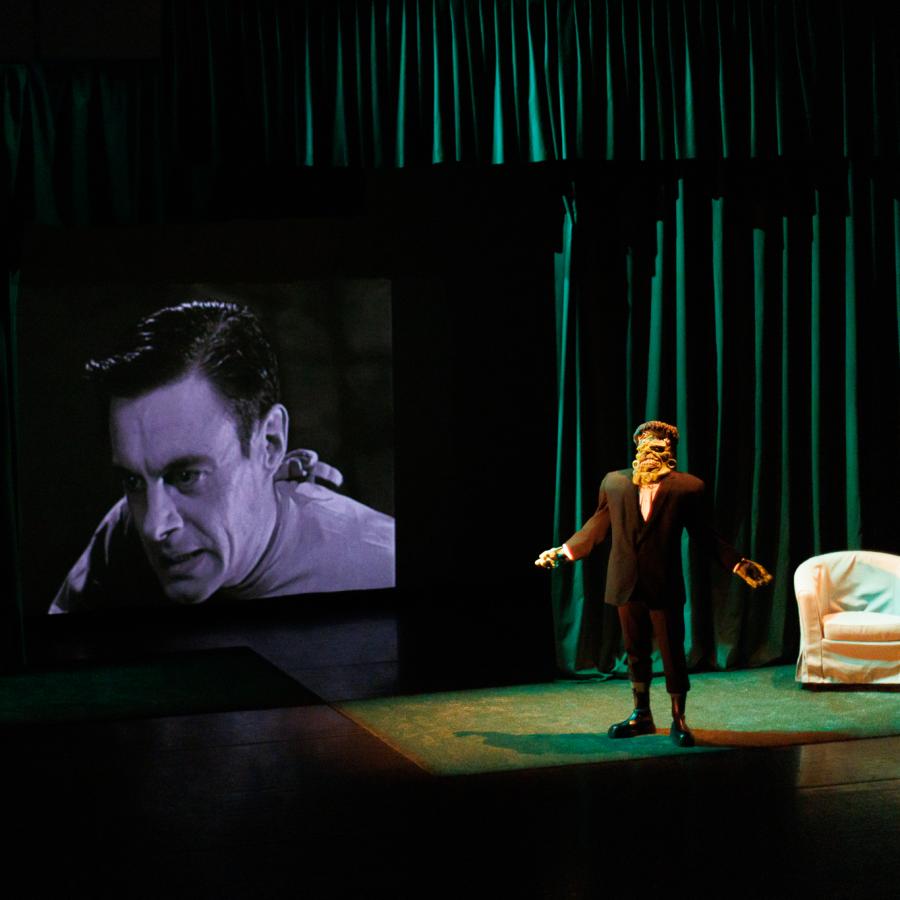Hester-Stefan Chillingworth answers some questions about their cross-genre show Monster Show, coming to CPT 31 Oct - 3 Nov.
How did the idea come about to create The Extinction Trilogy?
As a non-binary person, I have to state my gender for it to be known. If I don’t say it, people don’t know it. (That’s true for everyone of course, although a lot of people are still able to get by comfortably on other people’s learned assumptions about what different genders ‘look like’). So, I started thinking a lot about what our bodies declare for us and what they mis-declare for us, and therefore the ethical dilemmas of putting people’s bodies on stage, where they often don’t have the chance to declare anything for themselves and will just be projected onto by an audience. These questions become even sharper when we’re putting other people’s bodies on stage, rather than just our own. I’ve done a lot of putting other people’s bodies on stage in my career, so I suddenly found myself really stuck with this question of how to continue doing that, ethically. I decided I wanted to make some work where the performers’ bodies are obscured, the audience don’t get to see the bodies easily, and therefore don’t get to make quick assumptions about those bodies. In all three shows in The Extinction Trilogy (Monster Show, Blood Show and Nature Show) the performers’ bodies are hidden deep inside costumes or otherwise masked. I got really interested in why we’re so eager to know what people look like – how it all ties up with how much power we ascribe to them, how much agency we afford them, how much we can lazily assume we know about them. How we can judge them. Obviously trans people are more than used to this invasive fascination with ‘what we look like’ and to me it feels like a real trans act of empowerment to deny the audience easy recourse to this information. People often ask me if The Extinction Trilogy is about getting rid of humans from performance – for me it’s about making us think with more humanity about humans. And it’s a trilogy because I think it’s important to insist that Queer and trans bodies get to take up space and time, and to encourage audiences to engage in a kind of ‘slow watching’, returning to the same sets of questions in new ways, and chewing them over with the artists, getting comfortable together with the fact that the really big questions can’t be answered instantly.
Why use Frankenstein as the source material for Monster Show?
Frankenstein is one of those brilliant source materials which pretty much everybody has a relationship with, whether or not they’ve actually read or seen any version of the story. It’s a very wide access point to work, which I think is really important. People even understand the made-up verb “to Frankenstein” something – to splice something boldly together from disparate elements, the original ‘monster mash-up’. My practice is pretty Frankenstein-y. What I make sits at the crossroad of theatre, live art, dance, visual art, film and text. It’s all of those things, and the new unnameable thing which is born when they crash into each other is part of the work, part of the exploration, part of what I’m trying to discover. I want my practice to be a barely controllable monster, crackling with electricity, fighting to understand the world anew. And of course, Frankenstein is a particularly strong source material for thinking about transness. Frankenstein’s monster is literally a surgically constructed body, which is made monstrous by other people. I had top surgery at the end of 2022, and so have a personal relationship to this. The monster struggles to fit into the narrow confines of the human world and is ultimately destroyed by ‘the mob’. Well, that’s the ending of the film I’m using anyway (spoiler alert). The 1931 film is great because Boris Karloff’s version is probably the most recognisable visual reference we have for Frankenstein’s monster, it’s 70 minutes which is perfect for a theatre show and for the durational task I’m doing (live dubbing the soundtrack with my voice), and the 1930s film style (clipped voices, stagey scenes) is really fun to play with. A modern film would probably be too fast, too technical, to do the live-dubbing over. And using the 1931 Frankenstein film also means that we really get to feel the old-fashionedness and the clunkiness of the narrative which has been severely cut down from Mary Shelley’s original novel. All of this helps with making Monster Show function as a riotously trans act of purging limiting and out-dated narratives.
How have other people described the show?
I’ve heard Monster Show variously described as an audio re-dub, a reverse lip synch, a re-animated film, an opera, a dance piece and an extreme endurance feat!
It’s all of those. It’s a show. It’s a hiding. It’s a revealing. It’s a reworking. It’s a creation. It’s a real risk and unknown every time I perform it. It’s a gamble. It’s a test. It’s an attempt, for the audience to bear witness to. It’s a laugh. And it’s most definitely alive.
Monster Show | 31 Oct - 3 Nov 2023 | £8 - £15
Get 25% off when you book more than one show in CPT's Autumn/Winter season.


